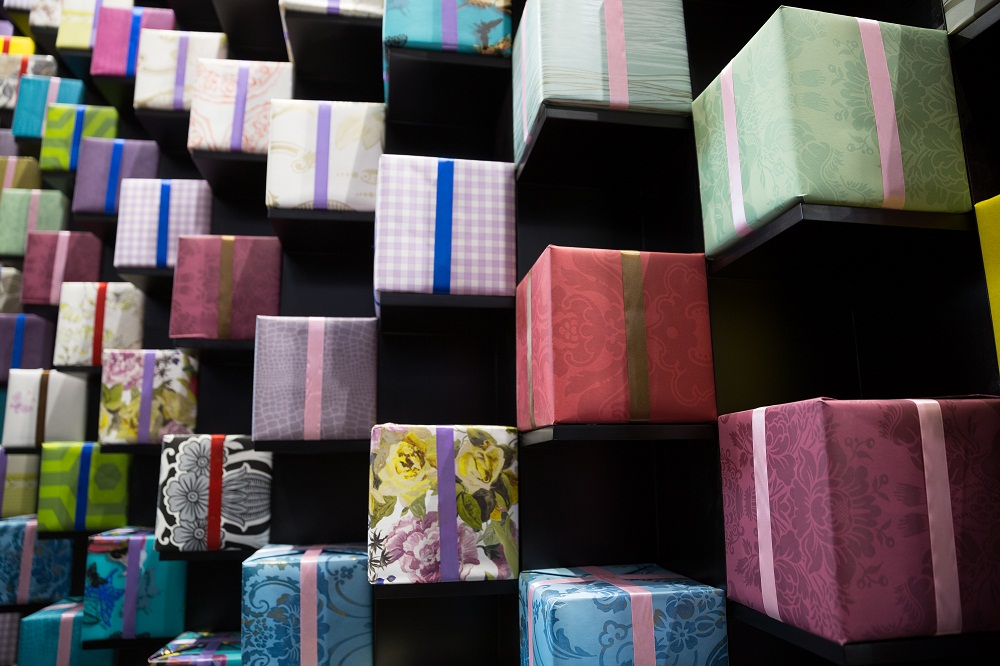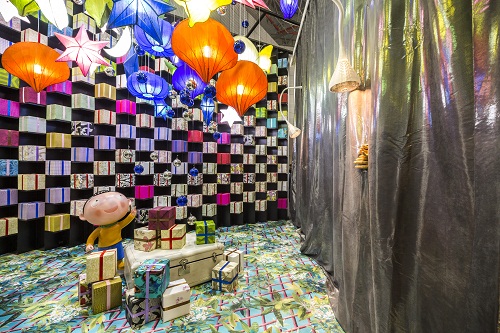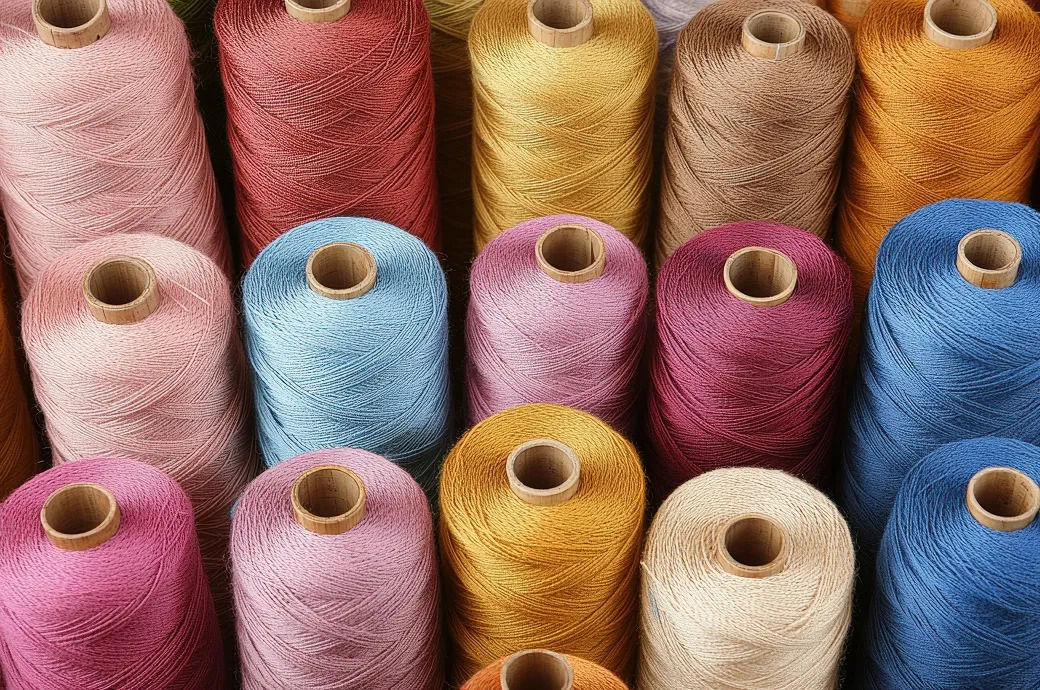FW

Pushes up overall growth

The per hectare Bt cotton yield has grown significantly over the breakdown of area between rain-fed and irrigated land, in both cases, the rise has been the same. This made cotton cultivation profitable and a rise in yield in turn encouraged farmers to bring in more area under cotton cultivation. Farmers recognised the benefits of technology, and thus adopted it in a huge way. It is also clear that a rise in yield will translate into a rise in gross income.
Besides, a rise also means reduction in cost of production per kg of cotton, which would be moderated somewhat by the rise in cost of seeds. Bt cotton also enables almost complete elimination of all types of pesticides that deal with bollworm, since after the entry of Bt cotton, there has been a major reduction in the use of pesticides.
Moreover, there is a reduction of fertiliser and increase in the yield per kg of cotton. Per hectare, there is no need to apply any more fertiliser compared to when non-Bt cotton was being produced. The absolute use of water per hectare goes up by 15 to 20 per cent, where irrigation is available. The per kg use of water is significantly less though, since the rise in yield is 75 per cent.
A 70 per cent reduction in labour for spraying pesticides is also envisaged. Thus, rise in productivity of labour will be more than that of the yield. In turn, this would provide an opportunity to increase wages without increasing the total labour cost, leading to a rise in well-being in rural areas.
Exports and production on the rise
India’s global share of cotton in 2002 was 12 per cent, and now it is about 25 per cent, which makes us the largest producer of cotton in the world. Earlier there were zero exports and now we are exporting 25 per cent. Thus, cotton farmers have been able to establish the industry as a significant positive contributor to the country’s GDP.
Prices have had a moderating impact due to rise in production and reduction of cost. Also, the net income per hectare of land would go up significantly, taking into consideration the rise in income and reduction in cost. Meanwhile, rise in cotton production has also resulted in a rise in cotton seeds, which in turn would reflect in the price of cotton. The rise in cotton seed oil has in part met the rise in demand for vegetable oils because of higher incomes. Also, cotton seed cake is good for animal feed as it increases the fat content of milk, particularly, buffalos.
Yield can go up 700 per cent, with better management of farms and India can also increase production of cotton by another 30 per cent, thus benefiting the farmer as well as the economy.
India's garment exports could be hit by China's recent devaluation of the yuan. In fact, Vietnam one of India’s major rivals, has also devalued her currency by one per cent. China devalued yuan by four per cent, to boost exports. India’s garment exporters want the three per cent interest subvention on rupee export credit to be reintroduced with retrospective effect from April 1, 2015. They feel, garment exports will grow if India were to expedite free trade agreements with the EU, Canada and Australia. Right now, knitwear exports from India to EU have a 42.25 per cent share in total exports.
Vietnam has emerged a major competitor to Indian garment exports. Vietnam exported about $28 billion worth of garments in 2014-15 (against $16.82 billion by India) and out of this $4 billion worth of garments was destined for the European Union. Vietnam’s exports to Canada are double India’s exports to Canada. In another two years, Vietnam will enjoy the benefits of free trade agreements with the EU and the US. Exporters hope there is no drastic changes in forex rate. The industry hopes GST comes into effect from April 1, 2015.
The latest trends and innovations in laundry and dry-cleaning industry will be on display at Texcare International in Frankfurt from June 11 to 15, 2016. Held every four years, the show is recognised for bringing new products and ground-breaking services, while providing a platform to network and exchange know-how and information.
At the last Texcare International, 15,650 visitors attended the show to see new products and services offered by 262 exhibitors from Germany and other countries. At the forthcoming Texcare, the exhibition area has been expanded to accommodate more exhibitors. Messe Frankfurt is taking into account the increased demand for exhibition space, which could be felt at the last fair in 2012. Furthermore future-oriented product groups can now take advantage of the improved presentation opportunities.
The textile and clothing export sector generated 43 per cent of the total employment in 2014. Even though overall export of cotton textiles declined by 0.1 per cent compared to fiscal 2013-2014, exports of cotton fabrics and made-ups registered a growth of 11 per cent and five per cent. Exports of value added products in the long run will lead to greater employment and higher level of investments.
The emergence of mega trade agreements being promoted by the US and the European Union among themselves, and other key trading partners like Korea, Vietnam and Japan, poses fresh challenges to countries like India. Therefore, it would be best if India takes an integrated approach rather than an ad hoc one while negotiating new FTAs or re-negotiating old ones.
Government policies need to ensure that all fibers are available at par or below international prices. Considering the infrastructural disabilities, cascading effect of un-rebated taxes, high cost of inputs and preferential benefits granted to competitors, the government has to play an important role by continuing export benefits for some more time.
The industry needs to accept that greater use of technology is not only shrinking markets, product cycles, deadlines, but is also simultaneously providing the industry with newer platforms for reaching out to its customers worldwide.
Bangladesh's garment exports to Turkey fell 21.58 per cent last fiscal due to the exorbitant duties slapped by the latter and the devaluation of the euro. Turkey imposed a 17.5 per cent duty on apparel imports from least developed countries in 2011 to safeguard its local industry. Being a least developed country, Bangladesh's garment exports to Turkey have begun declining since then. Bangladesh's garment exports to Turkey were rising fast a few years ago because of a zero-duty benefit.
Prior to the imposition of duty, Turkish importers used to purchase Bangladeshi garments in bulk and re-brand the goods with new logos to export them to Russia. But demand for Bangladeshi T-shirts, shirts, trousers and sweaters is still high in Turkey due to competitive prices. In addition to the duties, the devaluation of the euro against the Bangladeshi taka is another reason behind the decline in export value. Payments between Turkey and Bangladesh are settled in euro.
Bangladesh on several occasions has requested the Turkish government to remove the duties but that has not happened. Following the imposition of safeguard duties by Turkey on readymade garment imports from Bangladesh, Bangladesh’s export earnings experienced a drastic fall.
Busi Giovanni, the Italian socks knitting machine builder has launched two new medical hosiery knitting machines for large sized medical hosiery. The new medical pantyhose (needle counts from 226 to 366) and the medical terry pantyhose (needle counts from 226 to 280) machines enable the production of large socks and pantyhose. Busi will expand its production capacity as demand grows for its medical range of compression hosiery knitting machines and other products.
Currently Busi has the capacity to produce around 200 machines per year and plans to make over 250 machines this year. Busi machines present the possibility of knitting in true rib. The terry version presents the possibility of knitting sandwich terry.
Since 1958, Busi has specialised in design and construction of single-cylinder machines with rib needles in the dial for the production of high-quality stockings, socks and tights, which cover classic, patterned, sports, technical as well as medical, with special solutions for graduated compression.
The company sells in more than 50 countries around the world. It plans to outsource the manufacture of certain components from companies who are known for their expertise and quality production. The final machine assembly and testing will take place in Busi’s own factory.
www.busigiovanni.com/en/
The global market for smart textiles and fabrics is expected to grow at a compound annual growth rate of 24.1 per cent from 2013 to 2020. The market is expected to be fuelled by the growing penetration of smart phones and other smart or high-tech devices including iPods. Most new laptops and smart phones are equipped with Bluetooth Low Energy technology, which enables the connection of sensor-based devices to the internet through mobile phones.
Growth in end-use industries for smart textiles is expected to favorably impact this market in coming years. Protection and military applications are expected to be prominent and register high growth. Sports and fitness applications and the medical field are also expected to emerge as fast-growing sectors.
Growth in the fashion and entertainment industry is expected to propel the smart fabric market. While, demand from the sports and fitness sector has been increasing with a growing awareness of the benefits of a healthy lifestyle. Miniaturisation of electronics is expected to significantly fuel industry growth over the forecast period. To make sensors compatible with fabric and ensure optimum comfort and wearability, product developers have focused facilitating efficient integration of components into the fabric.
Bangladesh will crack down on illegal units and streamline the readymade garment sector. Textile and garment factories have to get themselves registered. Violations will attract a prison term or a fine while factories have to renew their license every three years. The Directorate of Textiles will be an effective sponsoring authority for the RMG sector. The directorate has the authority to inspect factories at any time and factories would be bound to provide documents. The textile directorate will establish a database of industries based on the information provided by the factories.
However, knitwear manufacturers and exporters say it would not be pragmatic to renew licenses of factories every three years as the industry does not comprise trading companies. The period for renewal of license for factories should be 10 years instead of three years, they say. Factory owners have expressed reservation over the registration clause. They say it should be applicable to new establishments and the license for existing factories should be renewed based on the previous license of the Board of Investment.
Manufacturers have also demanded scrapping the provision of recommendation to the customs authorities regarding release of imported capital machineries and indemnity bond.

Asia's premier fair for home textiles, Intertextile Shanghai Home Textiles-Autumn Edition 2015, concluded last week, with over 43,000 trade buyers visiting the fair. It was held for the first time at the National Exhibition and Convention Center in Shanghai, spread across 170,520 sq. mt.

Exhibitors and visitors were satisfied with hall layout and arrangements. The high point was there were 1,402 exhibitors from 30 countries and regions, compared to 1,334 in 2014, the highest in 21-years history of the fair. Nearly 30 Indian participants including DDe'cor, Dicitex Furnishing, G M Syntex, Shingora Home among others made quite an impact at the fair. Handloom Export Promotion Council (HEPC) had 10 participants at their India Pavilion. And Lakshmi Narayan, Superintendent, HEPC expressed his satisfaction over Indian participation in the show.
“We’re delighted that our first edition in this new venue was such a success,” opined Wendy Wen, Senior General Manager of Messe Frankfurt (HK), adding, “But going beyond record figures, there were a number of other aspects that were just as pleasing such as the increase in internationality of participants, and the number of first-time overseas exhibitors who were seeking opportunities in the Asian market. We also had a number of new product zones, as well as returning ones, which proved extremely popular, while our new InterDesign programme attracted huge crowds to the trend area, Trend Concept Show and seminars.”
Optimistic about China’s prospects
The fair took place against the backdrop of economic uncertainty in China. However, this did not dampen the enthusiasm of both new and returning overseas exhibitors that target the Chinese mid-range and high-end markets. New exhibitors from Turkey and Korea too shared this sentiment. Many said they do not expect to be adversely affected. “We don’t anticipate any impact on our sales due to the economic situation in China,” argued José Grilo, Executive Manager of Grilo Kitchenware, exhibiting for the first time under the Associacao Textiles Home From Portugal banner. “People here still have money to spend, and we’re in the premium range, not the mass market, which hasn’t been affected. Buyers here appreciate European brands too,” he added. However, Hubert Duh, Executive Director, Messe Frankfurt ( HK) observed, “Yuan may take little longer to recover and in the short term, it may have some impact on global business as well.”
In recent years, the fair has placed emphasis on providing opportunities for exhibitors that match market demand through relevant product zones, with the new Whole-Home Style and digital printing areas joining the existing Exquisite Europe, Intertextile Design Boutique, editors and carpet & rug zones this year.
Buyers also appreciated the zones, as well as the internationality of the fair. “It’s very beneficial for us to visit the fair as it gathers suppliers from around the world. The International Hall is our favourite as having the different product zones and country pavilions makes it easier for us to locate our targeted suppliers and products,” David Costantini, Director, Profile Fabrics, Australia said.
InterDesign trend programme, a hit with visitors
The fair’s fringe programs responded positively to the demands of local market. The new InterDesign program was introduced to fulfil the growing need for design and trend information from middle and upper classes of China. In addition to the Trend Area, which was designed by the NellyRodi Agency, a new Trend Concept Show matched China’s top interior designers with eight leading brands including LaCanTouch, Brilliant & Refined, Designers Guild, Uniwal, Jean Paul Gaultier, Pt, Dedar and JAB Anstoetz to bring the trends in the Trend Area to life.
The next Autumn edition will take place from August 24 to 26, 2016, while the Spring edition returns next year from March 16 to 18, 2016.
Rajya Sabha MP & J&K Prabhari Avinash Rai Khanna have floated a proposal about setting up a pashmina processing unit in Ladakh. Kalraj Mishra, Union Minister of Micro, Small & Medium Enterprises, has conveyed the details regarding this on behalf of the Union government. The Prime Minister had, during his visit to Ladakh, announced a ‘Pashmina Promotion Plan’ for the benefit and development of the poor and nomadic Scheduled Tribe community of this region. This was conveyed officially in the reply. The Textile Ministry has allotted 30 crore rupees for this in the Union Budget of 2014-15.
Moreover, in the SFT meeting that was held later, it approved Rs 19.35 crores for Pashmina Dehairing Plant at Leh; Rs 156 lakh for setting up of Facilitation Centre and Fiber Testing Centre; Rs 200 lakh for provision of Guard Room with residence/shelters numbering 100 units for nomadic of Chungthang, and several other allotments of the kind.
The government has already released Rs 7.19 crore to ensure that the Ladakh Hill Development Council is able to briskly and effectively carry forward the programme of Pashmina Development and Promotion in the region. Besides, more funds, if necessary, have also been promised by the concerned ministry, during the current financial year on receiving the request from the J&K government.












